On 10th February 1841 a petition was presented to Thomas Calderwood Durham, nephew of General James Durham, who was briefly proprietor of Largo House, before Admiral Sir Philip Charles Henderson Calderwood Durham. This asked for the continued use of Largo Pond for the purposes of curling. It notes that curling had "been so long a favourite pastime with the inhabitants of this place" and that now there was a movement "to constitute ourselves into a Society, called the 'Largo Curling Club'".
The petition was favourably received and permission was granted for the newly formed club to have Largo Pond as there home. Largo House Pond was the club's base until 1905 when an artificial pond was laid down in Upper Largo, behind Crichton Place, next to the Simpson Institute. It is thought that curling had already been played at Largo Pond for about a century before the 1841 petition. There were certainly other curling clubs active nearby. Cupar Curling Club had been instituted in 1775 for example and there were active clubs in Colinsburgh (Hercules), Leven and Kilconquhar.
The newspaper piece above by Largo bank agent John More Dall (from the St Andrews Citizen of 8 March 1924) goes on to note that Largo Curling Club quickly affiliated with the Royal Caledonian Curling Club (the governing body of the sport, which had been established in 1838). A key figure in formalisation of the Largo Club was James Bardner, who was the club's first president. He was a farmer - a long-time tenant of Chesterstone Farm - who was a five-time president of the club before his death in 1872, aged 55. The Fifeshire Journal (6 Jan 1842) reported on the first anniversary meeting of the Largo Curling Club (see below). James Bardner (misspelled in the piece) presided over the evening. Held at Bell's Inn in Lundin Mill, the meeting confirmed the "encouraging prospects of their yet infant society".
The pond at Largo House froze over slowly and with winters less severe than they had been in past decades, a move to an artificial pond made sense. Incidents like the one below (7 February 1901 Leven Advertiser) must have hastened the planning of such a move. The new pond could be sprayed with a thin layer of water that would freeze quickly with no risk of anyone falling through the surface. Moreover the new venue could be lit with electric light (16 lamps in all) - thanks to the ingenuity of Thomas Wishart. Upper Largo joiner Agnew Broomfield erected a fine clubhouse at the pond. Part of this can be seen in the photo below of the new pond in its early years (this picture appears in the book 'Largo: An Illustrated History' by Eunson and Band).
Just as technological advances enabled the artifical rink with its electric lighting, so further advances would result in this pond itself falling out of use. Indoor rinks began to appear and in the 1920s, Largo teams visited Edinburgh to play indoors. In 1938 Kirkcaldy Ice Rink opened (see 8 October 1938 Fife Free Press below). Times were changing but play continued at Upper Largo for many years after the locals had had their first taste of indoor curling. Improvements were made to the pond over the decades.
The club's centenary coincided with the Second World War and by the 1950s big changes would take place in the story of Largo Curling Club. At the 1952 Annual General Meeting reference was made to the club moving back to original location (i.e. Largo House Pond), suggesting that the artificial pond had become disused. Finally in 1955, the advert below appeared in the 29 June Dundee Courier. The sounds very much like the club selling off some of its fixtures and equipment. The club survived these changing times and still continues to this day - playing indoors at Kirkcaldy. You can find out more about the present day club here. Further information about the club - memories, photos and facts - would be very welcome - please comment or click the 'contact' link.
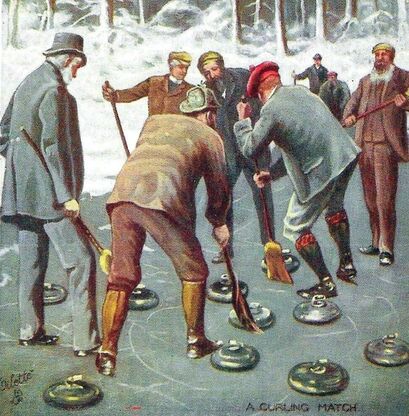
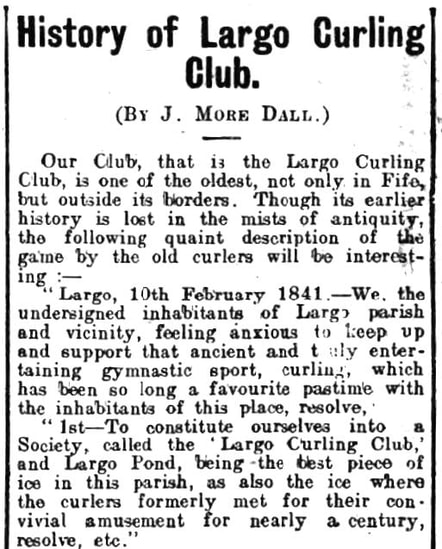
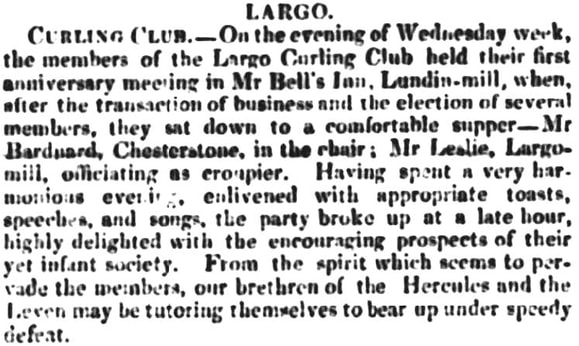
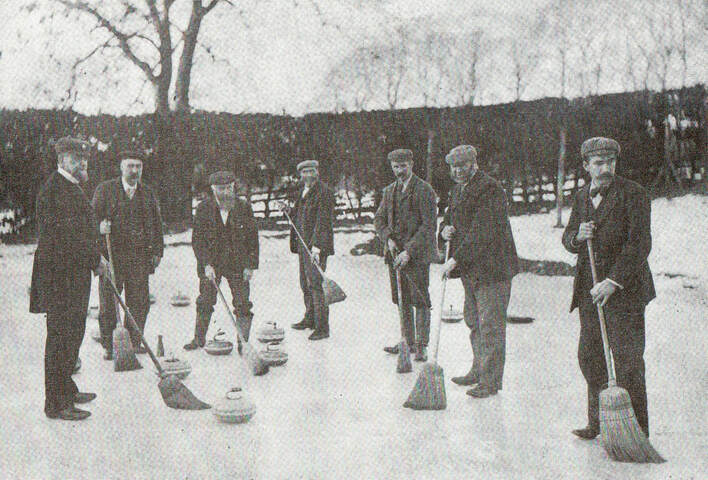
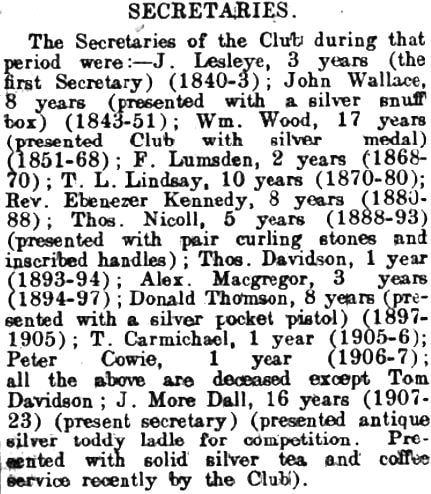
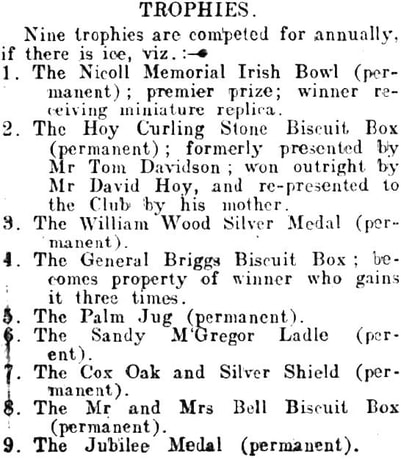
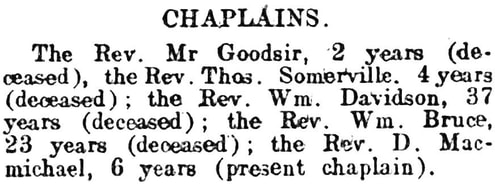
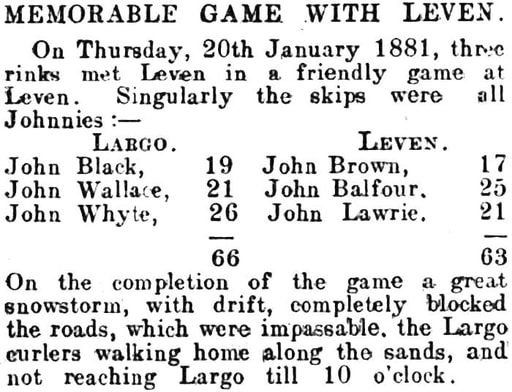
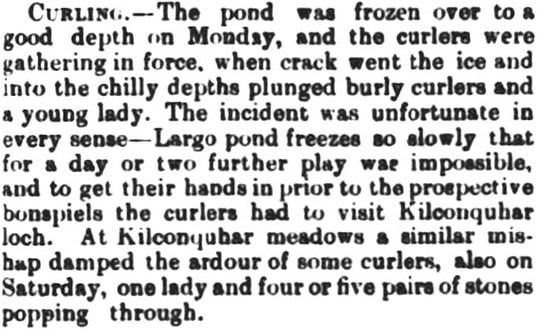
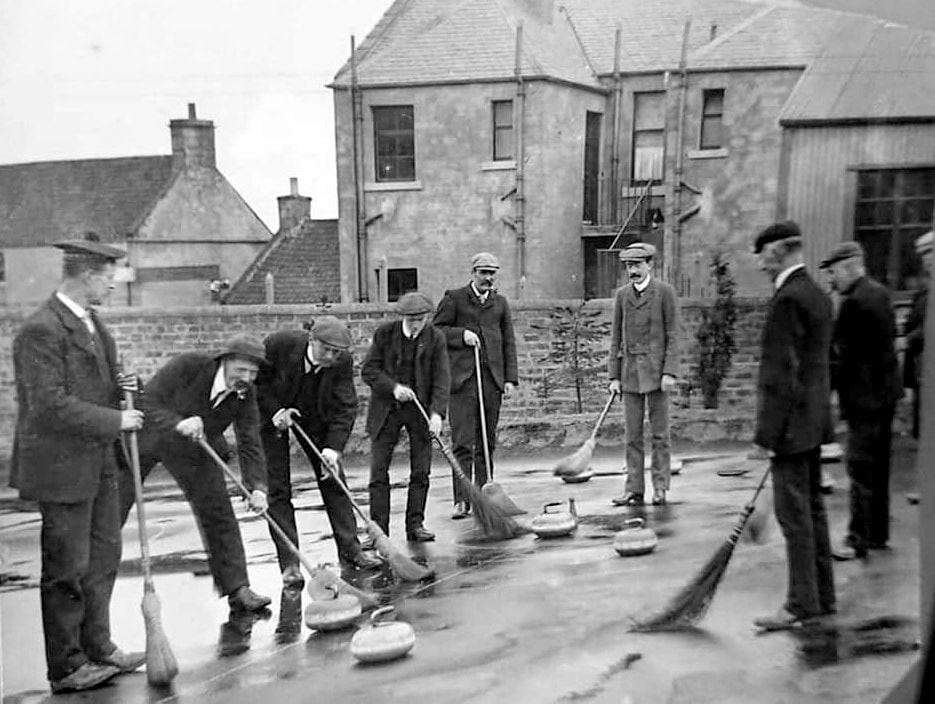
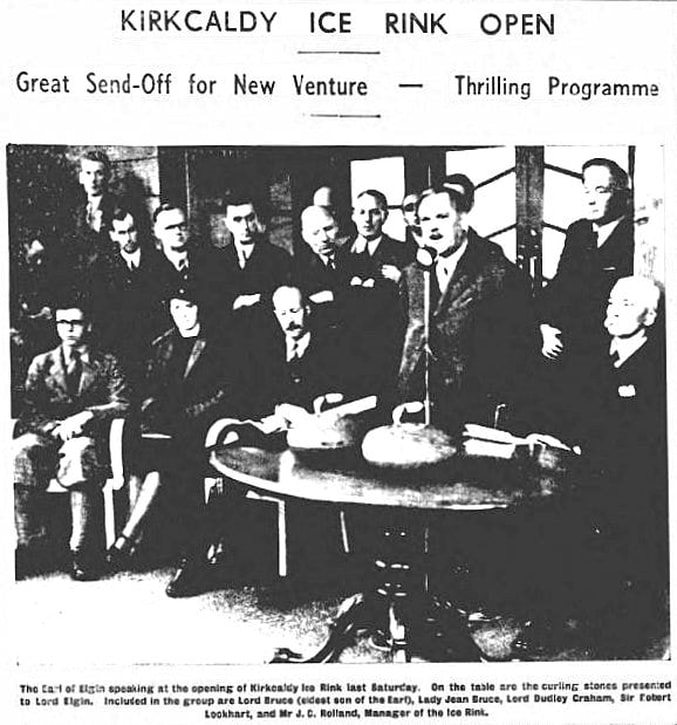
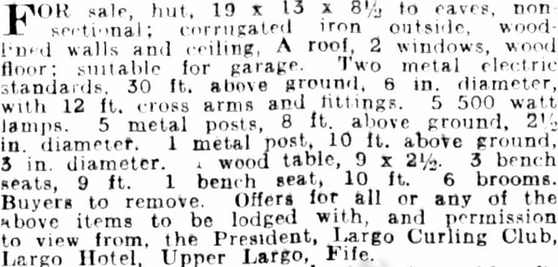
 RSS Feed
RSS Feed
